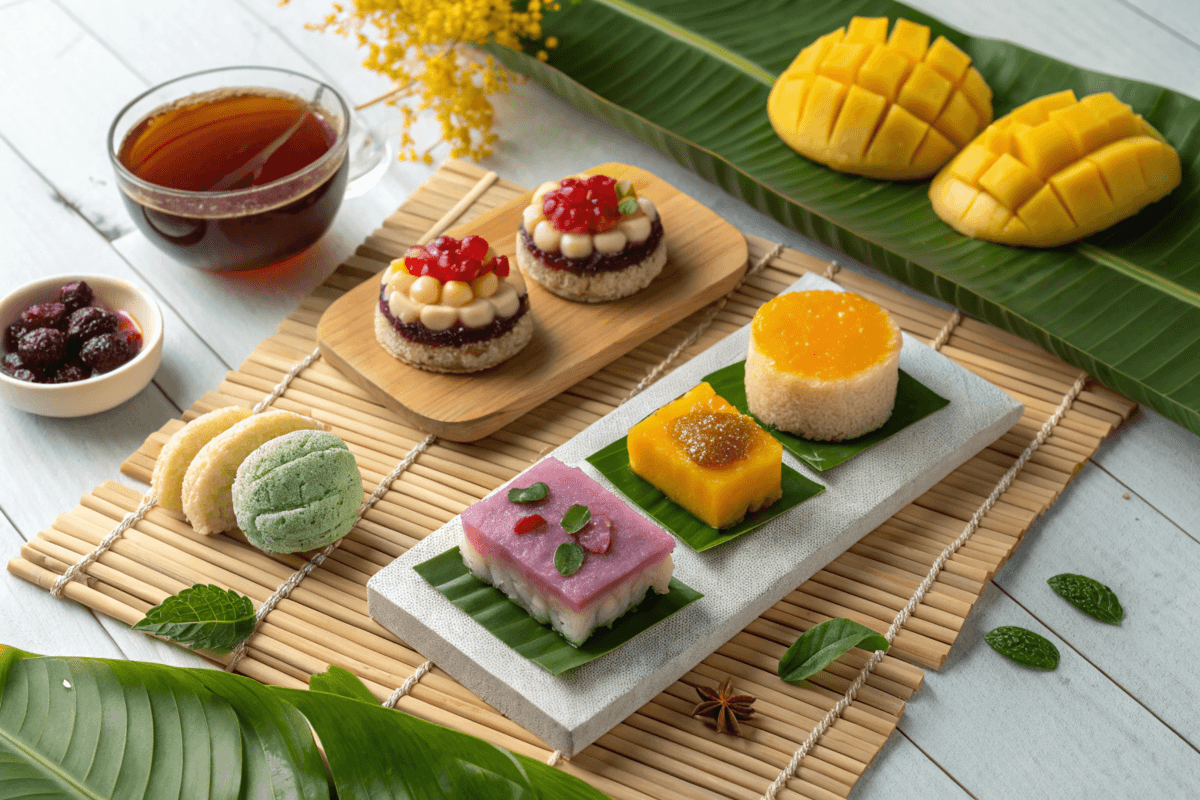When it comes to desserts, Asia offers a world of surprises that tickle the taste buds and warm the heart. From the delicate, chewy texture of mochi to the vibrant layers of halo halo, Asian desserts stand out for their creativity and cultural significance. This article dives into the defining characteristics of these sweet treats, their regional variations, and even modern takes on traditional favorites. Whether you’re a foodie eager to try something new or a home baker exploring global recipes, this guide has something for everyone.
What Defines Asian Desserts?
Cultural Diversity in Asian Desserts
Asia is a vast and diverse continent, and its desserts reflect that richness. Each region brings its unique flavors and textures to the table, often influenced by local ingredients and traditions. For example, Japanese desserts like mochi emphasize minimalism and harmony, while Indian sweets such as gulab jamun burst with syrupy richness. These treats are more than just food they’re expressions of cultural identity, often tied to celebrations, festivals, and rituals.
What’s truly fascinating is how these desserts have evolved while maintaining their cultural roots. For instance, Chinese egg tarts, initially influenced by Portuguese custard tarts, have become a staple in dim sum menus worldwide. Similarly, the popularity of mango sticky rice from Thailand has crossed borders, enchanting dessert lovers everywhere.
Common Ingredients in Asian Sweets
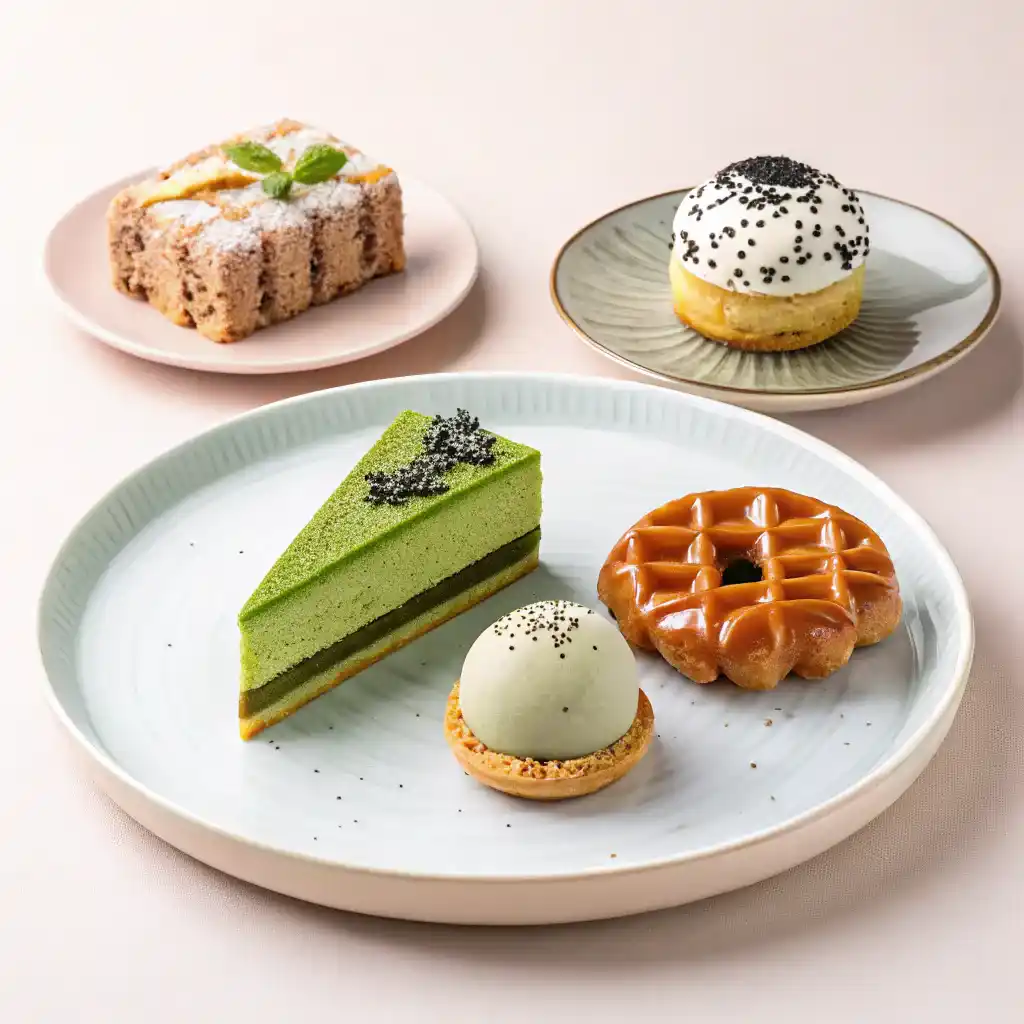
The ingredients in Asian desserts often differ from those used in Western confections. Staples like rice, beans, and coconut feature prominently. Sweet red beans, mung beans, and glutinous rice are foundational, providing natural sweetness and unique textures. Fruits, such as mango, durian, and jackfruit, are also frequently used to add freshness and vibrant color.
Another hallmark is the use of tea flavors, especially matcha and jasmine, which impart subtle bitterness that balances sweetness. These ingredients create desserts that are not overly sugary, focusing instead on harmony and natural flavors. The result? Desserts that feel light yet satisfying.
Popular Traditional Asian Desserts by Region
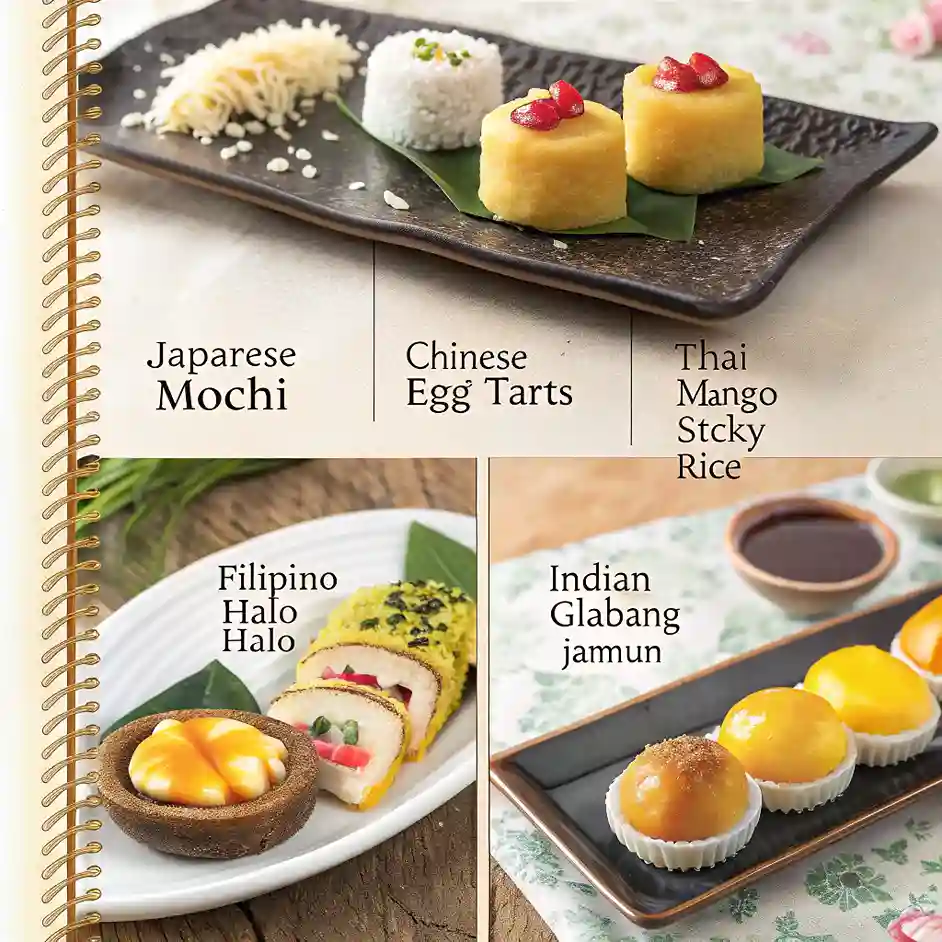
East Asia: Mochi, Egg Tarts, and More
East Asia is home to some of the most iconic Asian desserts. Japanese mochi, made from glutinous rice, stands out for its chewy texture and versatility. Whether filled with sweet red bean paste or flavored with matcha, it’s a treat enjoyed during festivals and casual gatherings. Chinese egg tarts, with their flaky crusts and creamy custard filling, are another beloved dessert, often served during dim sum.
Meanwhile, Korea offers delights like bingsu, a shaved ice dessert topped with red beans, fruits, or condensed milk, perfect for hot summer days. These desserts showcase the subtle sweetness and harmonious flavors that define East Asian cuisine.
Southeast Asia: Mango Sticky Rice and Halo Halo
Southeast Asia brings a tropical flair to its sweets. Thailand’s mango sticky rice combines fragrant jasmine rice, ripe mango slices, and coconut milk for a dessert that’s simple yet unforgettable. The Philippines’ halo halo is a vibrant mix of shaved ice, sweet beans, jellies, and flan, making it a colorful and indulgent experience.
Another regional highlight is Malaysia’s pandan cake, a fluffy, green dessert infused with the aromatic pandan leaf. These desserts emphasize the use of local ingredients like coconut, palm sugar, and tropical fruits.
South Asia: Gulab Jamun and Barfi
South Asia offers rich and syrupy treats that are deeply tied to celebrations. Gulab jamun, fried milk based dumplings soaked in cardamom flavored syrup, is a festival favorite in India and Pakistan. Similarly, barfi, a dense, milk based sweet, comes in countless variations, from pistachio to coconut.
For more delicious recipe ideas, explore this dessert recipe guide featuring sweets from different regions.
Unique Features of Asian Desserts
Use of Rice and Beans in Desserts
One of the defining features of Asian desserts is the prominent use of rice and beans. Glutinous rice, used in treats like mochi and sticky rice, provides a chewy, satisfying texture that’s unlike anything in Western desserts. Beans, especially sweetened red beans and mung beans, are often transformed into creamy fillings or toppings for desserts like taiyaki or halo halo.
Minimal Sweetness Compared to Western Desserts
Asian desserts often emphasize balance, with a milder sweetness compared to their Western counterparts. This allows other flavors, such as coconut, sesame, and matcha, to shine through. For example, green tea cakes or jasmine jelly desserts often carry a hint of bitterness that complements their subtle sweetness.
Incorporation of Tea Flavors like Matcha
Tea flavors are a hallmark of many Asian desserts. Matcha, derived from powdered green tea, is used in everything from cakes to ice cream, providing a slightly bitter, earthy flavor. Other tea infused desserts, like jasmine tea pudding, bring a floral note that pairs well with light, creamy bases.
Pairing these unique desserts with a warm beverage like elderberry tea can elevate the experience, blending rich cultural flavors with soothing herbal tones.
Modern Takes on Asian Desserts
Fusion Desserts Combining Asian and Western Styles
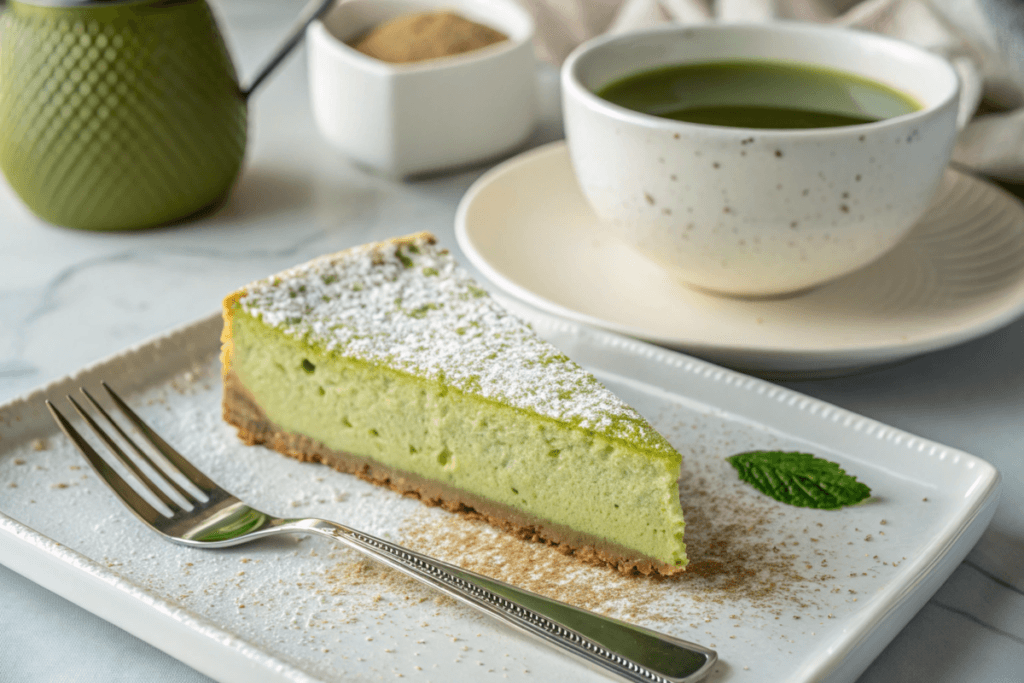
In recent years, Asian desserts have evolved, blending traditional flavors with modern techniques. For instance, matcha cheesecake fuses the earthy taste of Japanese green tea with the creamy richness of Western cheesecake. Similarly, mochi donuts, a hybrid of chewy mochi and the classic fried donut, have taken the culinary world by storm.
These fusion desserts often include unique pairings, such as black sesame macarons or pandan flavored éclairs. The use of vibrant colors and intricate designs makes them not only delicious but also highly Instagram worthy, capturing the attention of food enthusiasts worldwide.
Trendy Asian Inspired Desserts
Trendy Asian desserts like boba tea ice cream and ube waffles are dominating dessert menus and grocery shelves. Boba tea, a Taiwanese favorite, has inspired desserts like bubble tea flavored cupcakes and ice creams that feature chewy tapioca pearls. Meanwhile, ube, a purple yam from the Philippines, is being used in everything from cakes to cookies, providing a naturally vibrant hue and a subtle, nutty flavor.
These creative adaptations showcase how Asian desserts continue to inspire innovation while honoring their traditional roots.
For more ideas on crafting delightful treats, check out this guide on decadent desserts, which features both classic and modern recipes.
How to Make Easy Asian Desserts at Home
Quick and Simple Recipes for Beginners
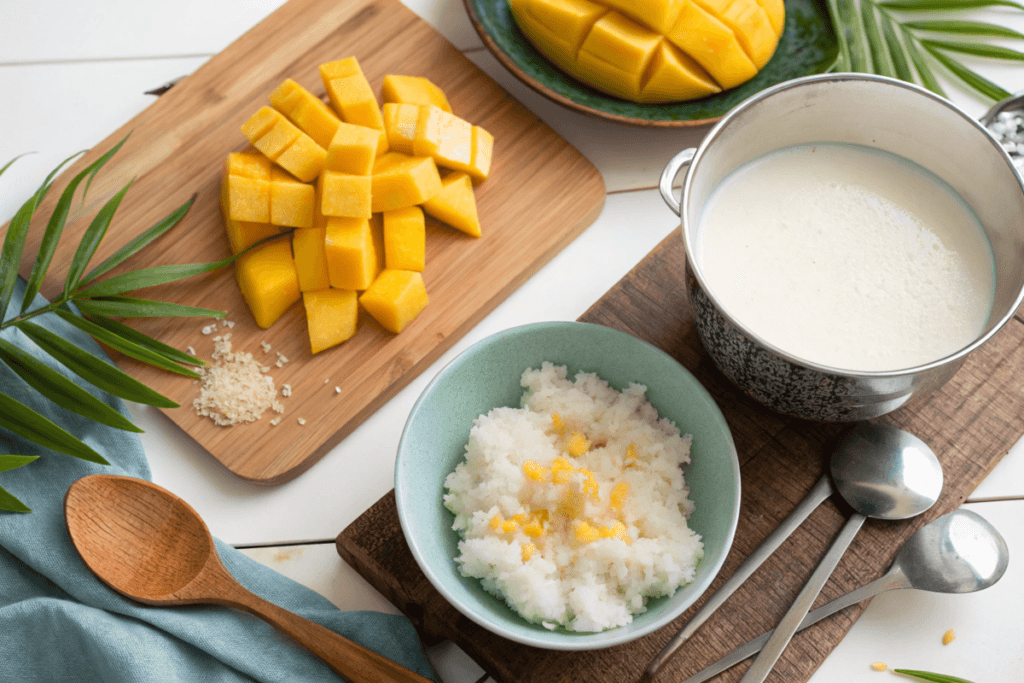
Making Asian desserts at home can be surprisingly simple. Start with beginner friendly recipes like mango sticky rice or coconut jelly. Mango sticky rice requires just a few ingredients glutinous rice, fresh mangoes, and coconut milk making it an excellent entry point for anyone new to Asian cooking.
Another easy option is mochi, which involves mixing glutinous rice flour with water and sugar before microwaving it. Roll it in cornstarch and fill it with ice cream for a quick twist on the classic treat.
Tools and Ingredients You Need
To make these desserts at home, you’ll need some essential tools and ingredients. A steamer is key for cooking sticky rice, while a small silicone mold is perfect for setting jellies. Ingredients like pandan leaves, sweetened red beans, and glutinous rice flour can often be found at local Asian markets or online.
Common Mistakes to Avoid
When making Asian desserts, avoid common pitfalls like overcooking glutinous rice, which can become mushy. Additionally, balance is crucial too much sugar can overpower the delicate flavors. Always follow recipes carefully to ensure you achieve the authentic taste and texture.
For those seeking more creative dessert ideas, consider exploring our collection of unique recipes, which are perfect for home cooks.
Healthier Options in Asian Desserts
Low Calorie and Vegan Asian Desserts
For those looking to indulge in Asian desserts without the guilt, there are plenty of healthier options to explore. Many traditional desserts are naturally lower in calories, relying on ingredients like fruits and coconut milk. For example, pandan jelly, made with agar agar and sweetened with a touch of palm sugar, is both light and vegan friendly.
Another great choice is sesame balls filled with sweetened red bean paste, which can be baked instead of fried for a lower fat alternative. These desserts prove that you don’t have to compromise on taste to enjoy a health conscious treat.
Natural Sweeteners and Gluten Free Alternatives
Many Asian desserts incorporate natural sweeteners like honey, palm sugar, or dates, which not only add depth of flavor but also make them a healthier choice compared to refined sugar. Additionally, desserts like mango sticky rice and coconut tapioca pudding are naturally gluten free, making them ideal for those with dietary restrictions.
Using glutinous rice flour as a base, you can create a wide range of desserts that cater to gluten free diets while maintaining the chewy, satisfying texture that defines many Asian desserts. These adaptations allow everyone to enjoy the unique flavors of these sweets without worrying about health or dietary concerns.
Asian Desserts in Global Culture
Asian Dessert Trends in Western Countries
In recent years, Asian desserts have gained immense popularity worldwide, especially in Western countries. From matcha flavored ice cream to mochi donuts, these treats have become staples in bakeries, cafes, and grocery stores. The trend is largely driven by their unique flavors, vibrant appearances, and the growing interest in Asian cuisine.
Social media platforms like Instagram and TikTok have played a key role in this rise. Viral videos showcasing desserts like boba tea cakes and colorful halo halo have made these sweets a global phenomenon. Western chefs are now experimenting with Asian inspired flavors, introducing them to new audiences and keeping the trend alive.
Celebrating Asian Desserts in Festivals and Events
Many traditional Asian desserts are closely tied to festivals and celebrations, making them an integral part of cultural events. For instance, mooncakes are shared during the Mid Autumn Festival, symbolizing unity and family. Similarly, Japanese wagashi is often enjoyed during tea ceremonies.
Global celebrations of Asian culture, such as Lunar New Year festivals, have brought these desserts to international stages. These events allow people to experience the rich heritage behind these sweets, fostering a deeper appreciation for their cultural significance.
FAQs About Asian Desserts
What Are the Healthiest Asian Desserts?
Some of the healthiest Asian desserts include fresh fruit based options like mango sticky rice or jelly desserts made with agar agar. These treats are light, naturally sweetened, and often incorporate nutrient rich ingredients like coconut milk or tropical fruits.
Can I Find Asian Dessert Ingredients Locally?
Many essential ingredients for Asian desserts can now be found in local grocery stores or Asian markets. Staples like glutinous rice, sweetened red beans, and pandan leaves are also available online, making it easier than ever to create authentic desserts at home.
Why Are Beans and Rice Common in Asian Sweets?
Beans and rice are common in Asian desserts because they provide unique textures and flavors. Ingredients like red beans and glutinous rice have been staples in Asian cuisines for centuries, offering a satisfying and natural sweetness that complements other flavors.
What Is the Most Popular Asian Dessert?
While preferences vary by region, mochi and mango sticky rice are among the most globally popular Asian desserts. Their simplicity, paired with unique textures and flavors, has won them fans worldwide.
Conclusion and Final Thoughts
Why Asian Desserts Are Worth Exploring
Asian desserts offer a diverse and exciting culinary journey that reflects the rich traditions and creativity of Asia. From the chewy texture of mochi to the vibrant layers of halo halo, these desserts captivate both the eyes and the palate. Their use of unique ingredients like pandan, matcha, and red bean makes them stand out in the world of sweets.
Whether you’re trying them at a restaurant, purchasing from a local bakery, or making them at home, Asian desserts provide a delightful way to explore different cultures through food.
A Sweet Invitation to Dive In
The rise of Asian desserts in global cuisine shows how food connects people across cultures. By embracing these treats, you’re not only indulging in delicious flavors but also celebrating the traditions and artistry behind them. So, why not take the plunge? Discover a new favorite dessert and share the experience with family and friends.
For more ideas and inspiration, consider checking out recipes that highlight both classic and modern Asian flavors. You might just find your next go to dessert!

